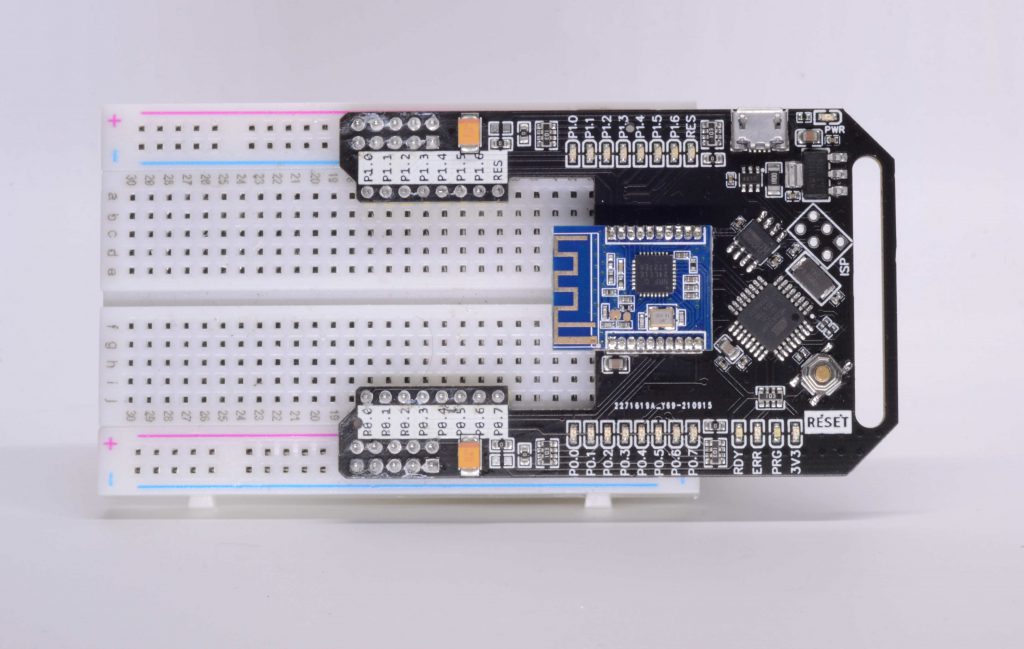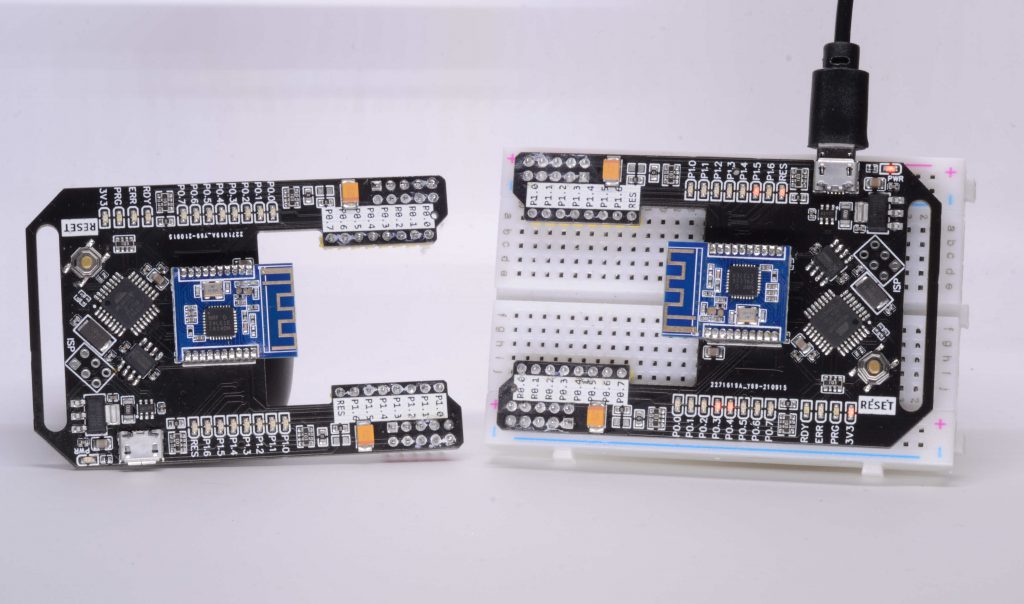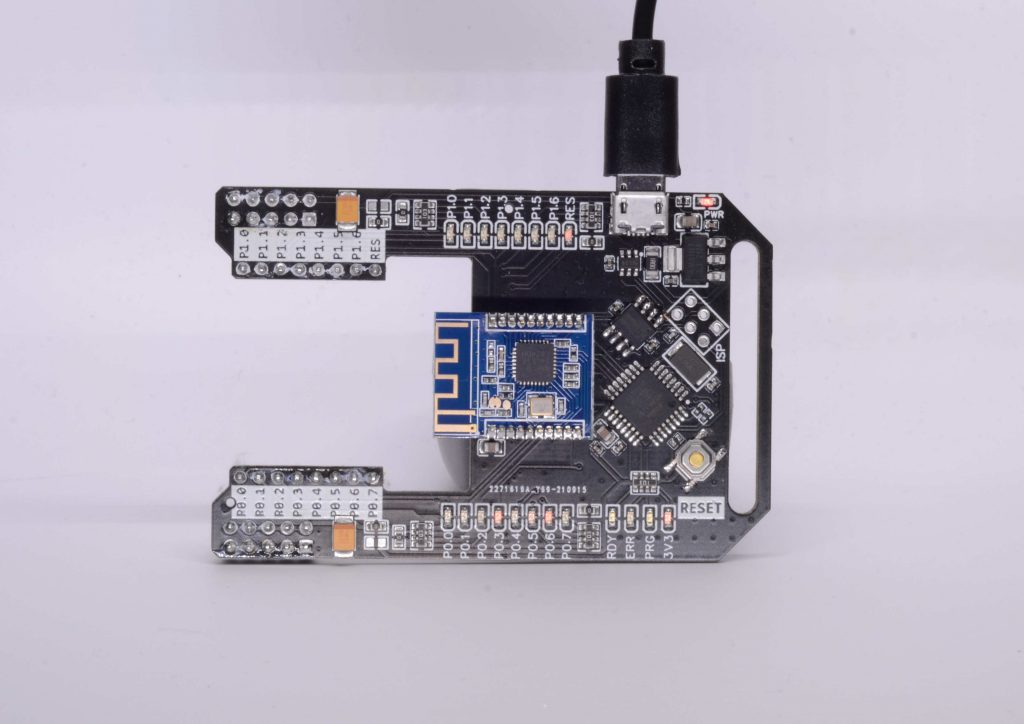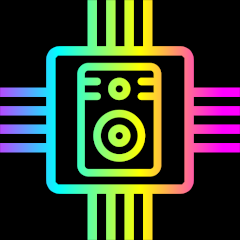


What is it?
nRF24LE1 development board is a tool that allows quick prototyping of NRF24LE1 Wireless chip.
Why did I make it?
NRF24LE1 is a curios chip that in my opinion deserves proper community attention. It combines everyone’s favorite NRF24L01 radio chip with powerful 8051-family MCU core. It is incredible value for money, but not that easy to start with, since modules available on the market has inconvenient format while tooling is quite poor.
nRF24LE1 development board is trying to close the gap and provide user friendly way to play with.
Why nRF24LE1
Just for fun. Also it is dead cheap. $2-3 for ready to use module. But it is outdated, not recommended for new design, and probably you should use nRF52X or nRF53X series chips instead
Dev Board Features

- Breadboard friendly design with user-prototyping area
- all GPIO ports on the breadboard
- 2 power rails powered from built-in 3.3 voltage stabilizer
- On-Board Atmega328P MCU serves a programmer role
- On-Board CH340 USB-Serial bridge allows direct programming via built-in USB port
- ESD and over-current protection
- Weak LED indicators for every port
- Community delivered SDK, Programmer code and code samples in the project repo tested and ready to run
- Open source and open hardware
nRF24LE1 Features
- 8-bit 8051 compatible microcontroller
- 16 kbytes on-chip flash memory
- 1 kbyte on-chip data flash memory
- 512 bytes high-endurance data flash memory
- 1 kbytes on SRAM plus 256 bytes of IRAM
- Fully featured ultra low power nRF24L01+ 2.4GHz transceiver core
- SPI master/slave, 2-wire master/slave, UART
- 2-channel PWM
- Programmable resolution ADC: 6, 8, 10, or 12-bits
- and many more
How to use it
Linked below is a repo with community driven SDK, PRogrammer tool and sample projects.
First build included SDK using sdcc compiler. Then build sample project using SDK.
Simply plug in USB cable and flash it using attached programmer code with single click.

Documentation
Both software and hardware documentation can be found on project’s Github. You can follow project progress at Hackaday
Where to buy
You may support our work by ordering this product at Tindie
